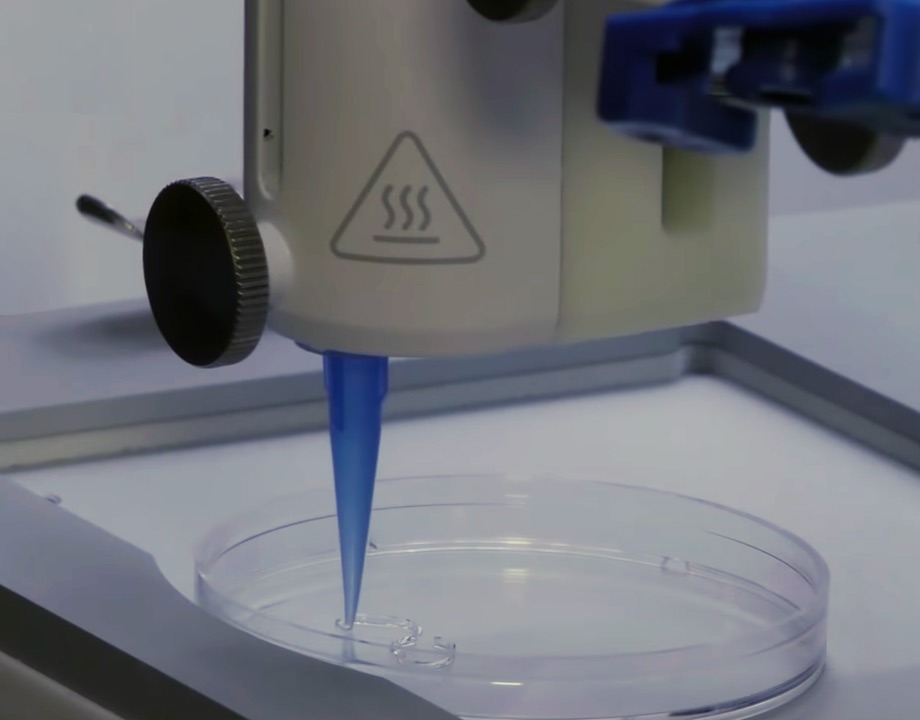From prototyping for new devices to producing final-use products, manufacturers have found new ways to improve healthcare with AM/3DP

Since the installation of one of the first two commercially installed SLA 1 machines at Baxter Healthcare in 1988, medical applications have been a leader in applying additive manufacturing (AM), commonly known as 3D printing (3DP). From prototyping for new devices to producing final-use products, manufacturers have found new ways to improve healthcare with AM/3DP.
More than 25 years ago, anatomical models began to be used for planning of complex surgical procedures. In 2000, hearing aid cases were being 3D-printed and within a few years became industry standard. Today, orthopedic implant manufacturers and tissue engineers are making use of the ability to create complex structures to create in-bone growth surfaces on devices and scaffolds to regenerate tissue.
The ability to manufacture from the patient’s data (medical imaging or surface scan) has been compelling to a community always looking for ways to innovate. With improving patient care as the primary goal, 3D printing has directly impacted more than 1 million patients. The estimate increases to more than 2 million if indirect uses such as patterns for clear dental aligners are added. Supported by continually improving machines, materials, and software, new users and applications are being found regularly.
How 3D printing impacts patient care can be summarized by the following areas:
Development & Prototypes: Using AM as a prototyping tool to accelerate development has been used by medical manufacturers for about 30 years. One of the first commercial installations of a machine was at Baxter Healthcare in 1988. Today, this lightweight surgical tool concept for tracking hip implant alignment during surgery, took advantage of AM design capabilities including assembly consolidation, topology and surface texture optimization, and ergonomic design features.
Prosthetics & Assistive Devices: Using surface scanning, patient-matched prosthetics and assistive devices can be made directly or indirectly AM serves as molding pattern to better, fit, mirror, or address unique needs of a patient. One example is this set of custom orthotics that are barely visible inside an ordinary pair of shoes, and successfully stabilized the walking of a young boy with cerebral palsy.
Dental: With the advancement of digital imaging and materials, AM/3DP has become a better way to produce many dental devices that are patient-matched. Accurate bite splints and night guards can be made using the E-Guard material.
Surgical Planning: Using medical imaging data, anatomical models can be used as surgical planning tools. Having a physical model often provides a surgeon with a unique perspective of how best to complete the surgery before going into the operating room. Both models and sterilized implants can be accompanied by surgical cutting guides. This example shows both a patient’s model and the surgeon’s cutting guide for an osteotomy to replace the jaw bone.
AM-Enabled Tissue Fabrication: 3D printing technologies can be used to print biological materials (bioprinting) or structures like scaffolds that can be used to regenerate tissues. This scaffold (closeup image) is made of Hyperelastic Bone® and is intended for off-the-shelf, generic bone void filler use. It can provide a scaffold on which the bone can grow.
Keep up with the latest developments and advances in Medical Additive Manufacturing by downloading the Medical Additive Manufacturing/3D Printing Year in Review. Covering January 1, 2018 through March 31, 2019, learn how dedicated professionals are transforming healthcare, improving the patient experience and saving lives.
See these trends and case studies presented at AM Medical, an immersive event experience being held this May 27-28 in Minneapolis, MN.
